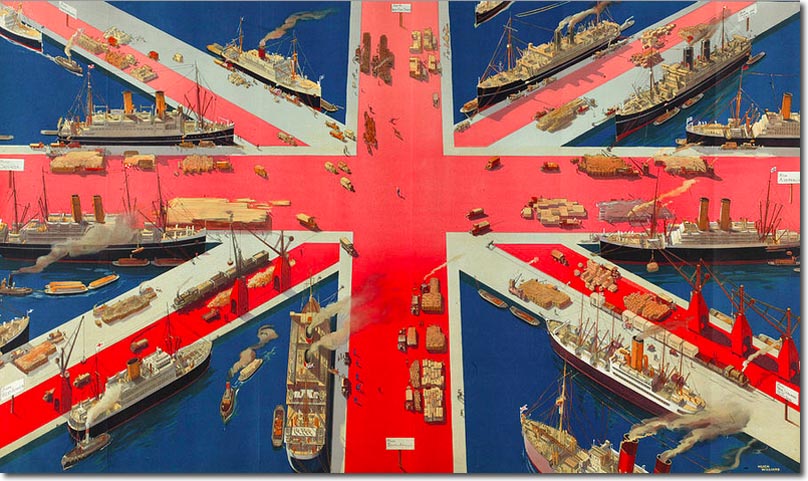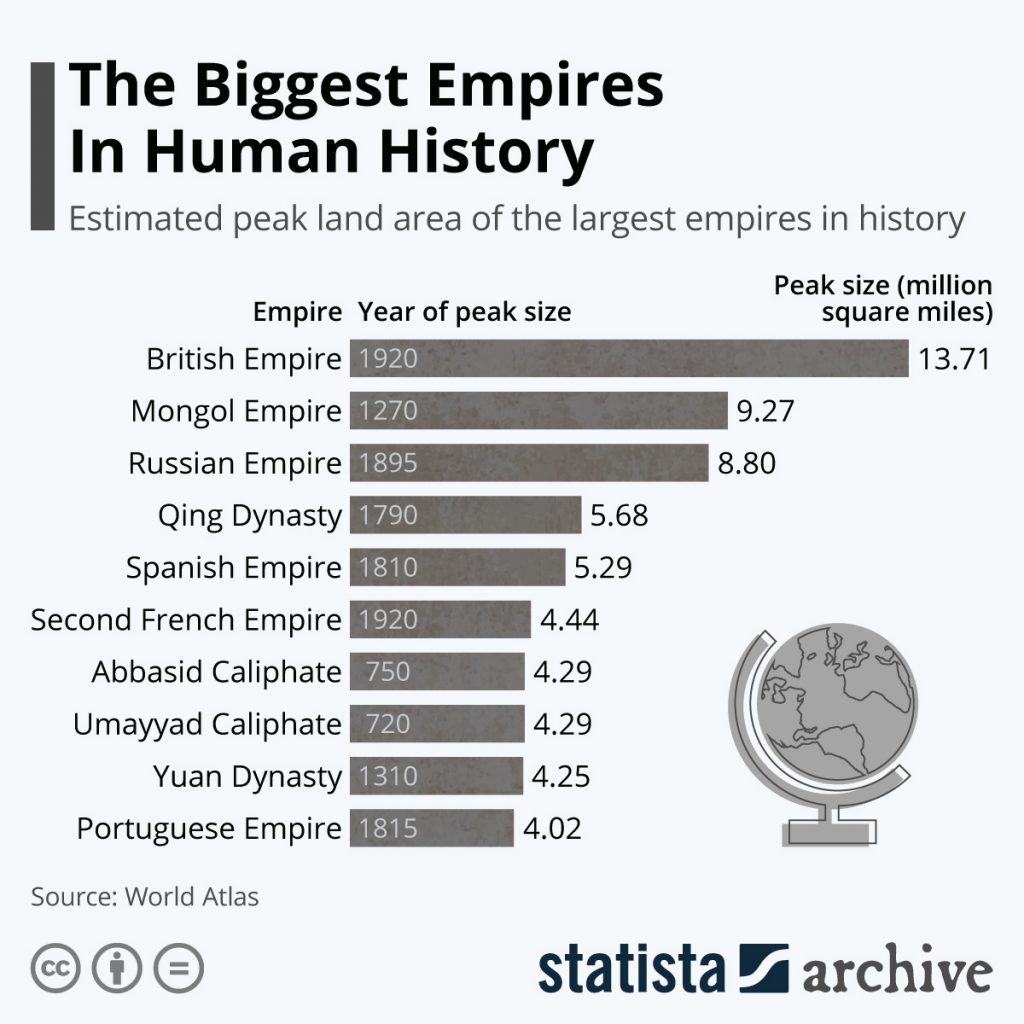The Age Of Empires might be over but their influence on the current geopolitical situation is still apparent. In terms of the land area during their peak years, these 10 empires are the largest, according to World Atlas.
10. Portuguese Empire

The Portuguese Empire (1415-1999) was the first of the European colonial empires. It also happens to be the longest-lived, spanning a total of six centuries.
During the 1400s, developments in navigation, cartography, and maritime technology were taken advantage of by the Portuguese to explore the unknown waters in the south and west. They have several reasons to do so:
- As a predominantly Catholic kingdom, monarchs view spreading Christianity as a duty
- Access to the Orient will allow them to participate in the spice trade
- A sea route to the Orient will allow them to bypass the coastline constraints, being situated next to Spain in the east and due to the Treaty of Tordesillas which created a duopoly between the two countries.
After the second world war, decolonization movement gained momentum. While Portugal resisted the decolonization process, the empire eventually finally ended with the handover of Macau to China in 1999.
9. Yuan Dynasty

The Yuan Dynasty (1279-1368) is the first dynasty in China led by a foreigner. Mongol Empire’s Kublai Khan established this dynasty and became its first emperor until his death in 1227. This empire is known to be the first one to use paper currency.
From our partners:
A series of natural disasters, the emergence of bubonic plague, and rebellions eventually ended this empire. The Red Turban Rebellion led the overthrowing of this empire, with the Red Turbans blaming the rule of the Yuan Dynasty for the natural disasters they experienced.
8. Umayyad Caliphate

The Umayyad caliphate is the first great Muslim-led dynasty. The Arabization program of this dynasty is credited for the spread of Islam and the Arabic language in a huge part of the world.
7. Abbasid Caliphate

The Abbasid caliphate is the succeeding dynasty to the Umayyad caliphate. The Abbasids overthrew the Umayyads in 750. The three-century rule of this caliphate cultivated intellectual and cultural developments in the Middle East during the period known as the Golden Age of Islam. This caliphate remained in power until the Mongol invasion in 1258 put an end to its reign.
6. Second French Empire

The Second French Empire (1852-1870) was ruled by Napoleon III. Increasing opposition to the government, the defeat of France in the Battle of Sedan during the Franco-Prussian war followed by an uprising in Paris all led to the abdication of Napoleon III and ultimately, the end of this empire.
5. Spanish Empire

Rival to the Portuguese Empire, the Spanish Empire (late 15th to mid 20th century). It was the empire where “the sun never sets” because its territory was big enough that at least one part of it was in daylight at any point in time. This empire reigned over multiple territories in Europe, Ocean, Africa, the Americas, and the Philippines.
4. Qing Dynasty

The Qing Dynasty (1644-1912) was the last of China’s imperial dynasties. The Qing society is characterized by a conservative shift, worsening punishment for homosexuals, heightening demand for purity among women, and an increased stigma over accepting widows as wives. Literature and stage plays deemed to be subversive were banned.
This dynasty fell in 1911 through a revolution which began in 1894. Xuantong, known as “The Last Emperor,” abdicated the throne in 1912.
Note: An earlier version of this article contains date typo error which wrote 1894 as 1984. This is now corrected.
3. Russian Empire

The Russian Empire (1721-1917) was established after Russia won against the Swedish and Polish empires in the Great Northern War. The February Revolution which sparked from the strain on Russia due to the World War I ended this empire.
2. Mongol Empire

While the second in the list, the Mongol Empire (1206-1638) is the largest contiguous land empire in history. This empire was founded in 1206 by Genghis Khan. A series of invasions and conquest made this large empire possible.
These conquests are some of the deadliest in history. However, these conquests also established the routes of trade as well as technology between the East and West. The Mongol Empire started disintegrating in 1368 and was eventually taken over by the Chinese Ming Dynasty.
1. British Empire

The largest empire in history is the British Empire. The British empire was catalyzed by the establishment of trading posts by the London-based trade business known as the East India Company.
Just like the Spanish empire, the sun never sets in this empire, occupying at least one territory in each of our modern continents (excluding Antarctica).
World War II severely bankrupted the empire. This, as well as the growing unrest among its colonies eventually led to the fall of the British empire.














